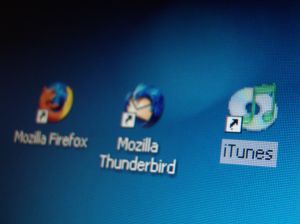An idea for reforming the textbook market in higher education was floated on the editorial page of the New York Times this past Sunday. Fellow Austinite Michael Granof proposed converting the textbook market to a site license approach used in the software world. His ideas, while thought provoking, fail the reality test.
 With a 16 year old son headed off to university in a couple of years I’m sensitive to the rapidly rising costs of higher education and the portion that textbooks represent. But I also think it is disingenuous to point at books as a major cause of this inflation. Students spend about 5% of their budgets on books, and the total is declining 1.8% this year. Compare this with the market for electronics where students spend twice as much and it is increasing at 25% per year. Was this topic worthy of a NYT Op-Ed?
With a 16 year old son headed off to university in a couple of years I’m sensitive to the rapidly rising costs of higher education and the portion that textbooks represent. But I also think it is disingenuous to point at books as a major cause of this inflation. Students spend about 5% of their budgets on books, and the total is declining 1.8% this year. Compare this with the market for electronics where students spend twice as much and it is increasing at 25% per year. Was this topic worthy of a NYT Op-Ed?
But putting relevance aside lets look at his arguments. First – the numbers seem high. The article cites costs ranging from $120-$180 for a complete textbook. The Association of College Bookstores puts the average cost of a new textbook at $52. Even assuming his numbers are correct Granof overstates the problem by implying that this is a cost born by every student every semester. Oddly, his own statements contradict this central argument.
“Today the used-book market is exceedingly well organized and efficient.”
So which is it – an extortionate group of publishers or an efficient market? Even in the antediluvian ‘70’s and ‘80’s when I was making a run through Higher Education I never bought all new books. Your average student, unless they are an idiot or a millionaire, is never going to pay full freight for books. The majority of their purchases should be used-books with an occasional new title where absolutely necessary.
 The average cost per title will be far below the numbers Granof cites. Lets use Granof’s own numbers to make this point. Averaging the prices he cites a book would cost $150. At the stated budget of $900/semester that means students are only buying 6 books a semester. That is a pretty light load. Students have to be buying lots of used-books to live within that budget.
The average cost per title will be far below the numbers Granof cites. Lets use Granof’s own numbers to make this point. Averaging the prices he cites a book would cost $150. At the stated budget of $900/semester that means students are only buying 6 books a semester. That is a pretty light load. Students have to be buying lots of used-books to live within that budget.
Beyond this he also misses the mark by assuming that most students will be happy consuming books on-line. This of course adds the cost of a computer and ubiquitous network access to the equation (ignored in the article). This is a both a huge cost to the University and the student and for equity purposes can’t just be assumed away. In fact – as already noted – students spend twice as much in electronics as they spend on books.
More importantly this assumption flies in the face of in-market experience. Despite millions invested in re-creating the book experience on-line it hasn’t met with widespread acceptance in the market.
I’m willing to admit that this might be because publishers just haven’t figured it out yet. Most publishers have a pretty horrid track record with digital products due to the clashing paradigms of print and software.
 But I also think there is a fair amount of common sense to the concept that re-creating the book experience on-line is a dumb idea and most students agree. This is a sign that their education is working for them. Books do what they do best and they have been refined for their purpose over several hundred years. Technology should be harnessed for what it does best (simulations, large scale number crunching, productivity tools, communication) not doing the functional equivalent of putting plays on early television.
But I also think there is a fair amount of common sense to the concept that re-creating the book experience on-line is a dumb idea and most students agree. This is a sign that their education is working for them. Books do what they do best and they have been refined for their purpose over several hundred years. Technology should be harnessed for what it does best (simulations, large scale number crunching, productivity tools, communication) not doing the functional equivalent of putting plays on early television.
There are some other points that are glossed over in the piece. For example I’m surprised that an accounting professor would assume that any company would be willing to accept “a small profit” unless there are serious market forces that make that a requirement. He also states that this radical restructuring of the market would be a “small modification” and “a slight change.”
Why doesn’t he complain that Apple is overcharging students for iPods? After all, if you wanted to control the costs associated with higher education that would have a bigger impact at this point than grinding more efficiency out of an already “well organized and efficient” market.
Visit the AAP sponsored Text Book Facts site for more detail on college spending and the place of books in it. Disclosure – I am not a member of AAP, but I am a recovering textbook publisher.
I also think that a much more interesting question is what will the role of textbooks be in a world where information is exploding exponentially. There is a role, but it is going to change in unpredictable ways.
That is a topic I’d love to sit down over a cup of coffee with Professor Granof and hash out.
There is a follow up to this article with a response from Michael Granof here.
 The Education Business Blog
The Education Business Blog

